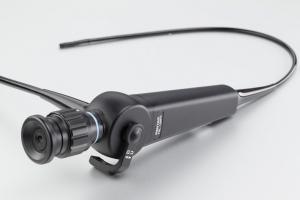Before performing any surgery, it is important to collect information that can help in making decisions about what type of surgery to have and what the results of surgery might be. Sleep apnea surgery is no different. Drug-induced sleep endoscopy (DISE) is an evaluation that can be performed in patients with obstructive sleep apnea who are considering treatment with surgery or oral appliances.
I have written about DISE many times on this blog and have made two videos that I have posted on Youtube: one describing DISE and showing some example videos and another focusing on how DISE can improve the results of sleep apnea treatment. In the second video, I mentioned the results of a major study that addressed the question of whether findings of DISE before surgery are associated with results of surgery. That study has just been published online by the medical journal The Laryngoscope.
Results of our study of DISE and surgical outcomes
The potential association between DISE findings and results of sleep apnea surgery is extremely important, and multiple small studies have addressed it. Unfortunately, small studies are not able to answer this question properly (I will not bore you with the details related to statistical power).
To overcome this, I brought together colleagues from 14 major sleep surgery centers around the world to contribute a total of 275 study participants. To improve the quality of the study, we then did something that had not been done previously: having 4 surgeons review the preoperative DISE videos without knowing what kind of surgery the study participants had or the results of surgery. Here are the major findings of our study entitled, “Drug-induced sleep endoscopy and surgical outcomes: a multicenter cohort study”, and I will present them according to the structures that DISE identifies as contributing to obstructive sleep apnea:
- Velum (soft palate)-related obstruction was not clearly associated with results of surgery. Most study participants had soft palate surgery in this study, so it was not possible to evaluate whether not treating the soft palate led to better or poorer outcomes. We did not have enough information about the exact type of soft palate surgery to determine whether there were differences between traditional uvulopalatopharyngoplasty and so-called advanced techniques like expansion sphincter pharyngoplasty.
- Oropharyngeal lateral wall-related obstruction was associated with a 50% decrease in the odds of substantial improvement in obstructive sleep apnea after surgery. One of the features of the advanced palate surgery techniques is that they may address oropharyngeal lateral wall-related obstruction, so this may be one of the reasons that expansion sphincter pharyngoplasty and lateral pharyngoplasty have shown better results than traditional uvulopalatopharyngoplasty. However, we could not evaluate this specifically.
- Complete tongue-related obstruction was associated with a 50% decrease in the odds of substantial improvement in obstructive sleep apnea after surgery. In these cases, tongue resection procedures like lingual tonsillectomy or midline glossectomy may have had better outcomes, as compared to not performing a tongue-directed procedure or performing other tongue-directed procedures like tongue radiofrequency or genioglossus advancement. This does not mean that the second group of procedures is not helpful, but it does mean that the more-involved procedures that physically remove tongue tissue may be needed and more effective in cases of complete tongue-related obstruction.
- Epiglottis-related obstruction occurred in less than 20% of the study participants, and this did not include enough cases to address its importance or the role of various procedures.
What this means for DISE and sleep apnea surgery
DISE was first described in 1991, although it had been performed for years prior to this. This study sheds important light on what may be the most important DISE findings, at least for the oropharyngeal lateral walls and the tongue. My own experience agrees with the study’s findings, in that I have always been concerned and cautious in cases where the oropharyngeal lateral walls played an important role in airway obstruction. In these cases, I have relied on the advanced palate surgery techniques and considered options like Upper Airway Stimulation, maxillomandibular advancement, or an oral appliance (can work in selected patients). I have also used Upper Airway Stimulation or the more-involved tongue resection procedures to treat patients with complete tongue-related obstruction, with tongue resection more of an option when the tongue-related obstruction is related to enlarged lingual tonsils (these are more-easily removed, typically with lower side effects).
We certainly have more to learn about DISE, but this is a major step forward in understanding where DISE can improve the results of sleep apnea surgery. It has been especially gratifying to develop and oversee this study, which arose from discussions in 2014 at the International Surgical Sleep Society meeting. The entire has devoted a substantial amount of time and effort to this, and the study was supported by the American Academic of Sleep Medicine Foundation. (UPDATE: they highlighted this research with a press release posted on their own website.) The study shows the value of coming together to produce higher-quality research, and I expect it is only the beginning of more collaborations to come.




− 1 = 5